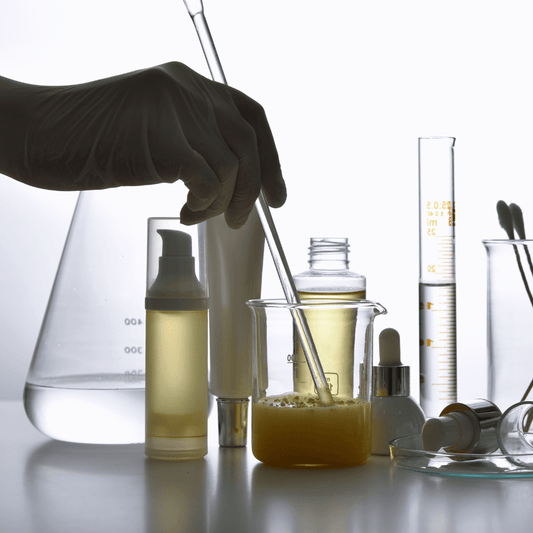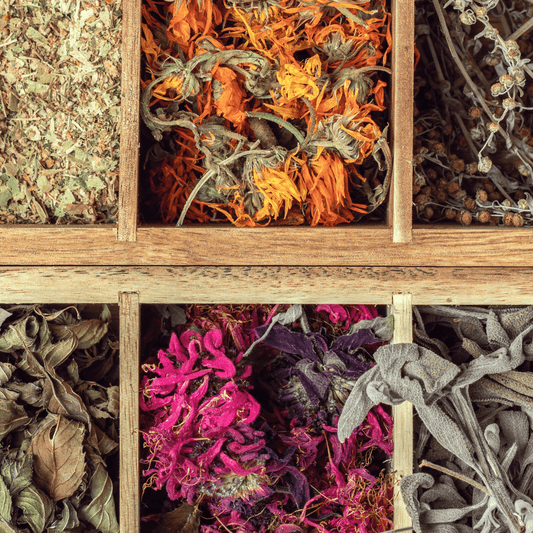
The Beauty of Color: 10 Naturally Pigmented Ingredients That Nourish Your Skin
In recent years, skincare has increasingly focused on natural ingredients, and one exciting trend is the use of naturally colored skincare ingredients. These vibrant, plant-derived ingredients not only look beautiful but are also rich in beneficial compounds like antioxidants, vitamins, and minerals. Let’s dive into some of the most popular naturally colored skincare ingredients, exploring their origins, benefits, and why they’re becoming essential components of a healthy skincare routine.
1. Guaiazulene (Deep Blue)
- Benefits: Soothing, anti-inflammatory, and healing.
- Key Compounds: Azulene.
- How It Helps: Guaiazulene, a blue pigment derived from guaiac wood and chamomile, is renowned for its calming and soothing properties. Often used in products designed for sensitive or irritated skin, guaiazulene helps to reduce redness and inflammation while promoting healing. Its rich blue color is not just aesthetically pleasing; it also signals its therapeutic benefits, making it a great addition to creams and masks aimed at soothing inflamed or stressed skin.
- Reference : Brynn’s Blue Lotus Elixir
2. Turmeric (Golden Yellow)
- Benefits: Anti-inflammatory, brightening, and acne-fighting.
- Key Compounds: Curcumin, antioxidants.
- How It Helps: Turmeric has been used for centuries in Ayurvedic medicine for its powerful anti-inflammatory and brightening properties. Curcumin, its active compound, can help reduce the appearance of dark spots, blemishes, and redness. Turmeric is often found in brightening masks and serums, as it promotes an even, glowing complexion.
3. Green Tea (Green)
- Benefits: Soothing, antioxidant-rich, anti-aging.
- Key Compounds: Polyphenols, EGCG (epigallocatechin gallate).
- How It Helps: The vibrant green hue of green tea comes from chlorophyll, which gives it antioxidant properties. EGCG, a potent antioxidant, fights free radicals that can cause premature aging. Green tea is also excellent for soothing irritation and reducing inflammation, making it ideal for sensitive skin.
4. Beetroot (Deep Red-Purple)
- Benefits: Detoxifying, anti-aging, and skin-rejuvenating.
- Key Compounds: Betanin, folate, potassium.
- How It Helps: Beetroot’s striking red color comes from betalains, pigments with antioxidant and anti-inflammatory properties. Beetroot can help stimulate blood circulation and provide a radiant glow, making it a popular ingredient in face masks and lip balms. It also provides hydration and nourishment, leaving skin soft and supple.
5. Blue Tansy (Vibrant Blue)
- Benefits: Anti-inflammatory, calming, and soothing.
- Key Compounds: Azulene, antioxidants.
- How It Helps: Blue tansy’s mesmerizing blue color comes from a compound called azulene, which has impressive anti-inflammatory and soothing properties. It’s often used in facial oils and creams for sensitive or acne-prone skin, as it calms irritation and reduces redness. The rich, earthy aroma also makes it a popular choice for relaxation.
6. Açaí Berry (Dark Purple)
- Benefits: High in antioxidants, moisturizing, and skin-firming.
- Key Compounds: Anthocyanins, omega fatty acids, vitamins A, C, and E.
- How It Helps: Known for its deep purple color, açaí is packed with antioxidants like anthocyanins that fight free radicals and help slow down signs of aging. The fatty acids in açaí oil also hydrate the skin deeply, helping to improve elasticity and reduce the appearance of fine lines and wrinkles. It’s a powerful addition to anti-aging skincare routines.
7. Papaya (Bright Orange)
- Benefits: Exfoliating, brightening, and acne-fighting.
- Key Compounds: Papain enzyme, vitamins A and C.
- How It Helps: The orange hue of papaya is due to its high beta-carotene content. Papaya is rich in the enzyme papain, which acts as a natural exfoliant, gently sloughing off dead skin cells and promoting cell turnover. This makes it an effective ingredient for brightening dull skin and fading dark spots. Papaya is also a natural anti-inflammatory, making it great for acne-prone skin.
8. Spirulina (Vibrant Green-Blue)
- Benefits: Detoxifying, anti-aging, and hydrating.
- Key Compounds: Chlorophyll, protein, B vitamins.
- How It Helps: This superfood ingredient comes from algae and boasts a rich green-blue color thanks to chlorophyll and phycocyanin. Spirulina is packed with amino acids, antioxidants, and vitamins, which help protect the skin from environmental stressors. It’s also deeply hydrating and nourishing, making it a great addition to face masks and serums for all skin types.
9. Saffron (Golden Red)
- Benefits: Brightening, anti-aging, and anti-inflammatory.
- Key Compounds: Crocin, safranal.
- How It Helps: Known as one of the most luxurious skincare ingredients, saffron has a rich, golden-red color and a history of use for its brightening properties. Crocin, an antioxidant compound in saffron, helps to lighten dark spots, reduce pigmentation, and give the skin a radiant glow. It’s also valued for its anti-aging properties, making it a prized ingredient in serums and creams.
10. Vitamin B12 (Vivid Red)
- Benefits: Nourishing, revitalizing, and skin-repairing.
- Key Compounds: Cobalamin.
- How It Helps: Vitamin B12, known for its vivid red color, plays a crucial role in skin health. It supports cell reproduction and repair, making it vital for maintaining healthy skin. Vitamin B12 is particularly beneficial for dry or flaky skin, helping to hydrate and soothe while promoting a more youthful appearance. It is often found in serums and creams that target uneven skin tone and texture.
Final Thoughts
Incorporating naturally colored ingredients into your skincare routine not only provides visual appeal but also brings numerous benefits from nature’s potent compounds. From the anti-inflammatory power of turmeric to the antioxidant richness of açaí, these ingredients are highly effective in promoting healthy, radiant skin. Choosing skincare products with these natural, colorful ingredients can be a wonderful way to support your skin and the planet.










